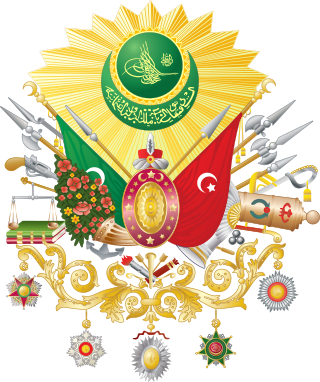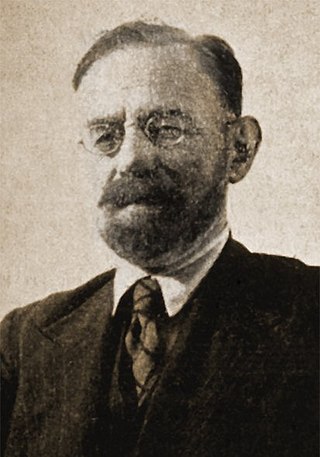Related Research Articles
The Turkish makam is a system of melody types used in Turkish classical music and Turkish folk music. It provides a complex set of rules for composing and performance. Each makam specifies a unique intervalic structure and melodic development (seyir). Whether a fixed composition or a spontaneous composition, all attempt to follow the melody type. The rhythmic counterpart of makam in Turkish music is usul.

Ottoman music or Turkish classical music is the tradition of classical music originating in the Ottoman Empire. Developed in the palace, major Ottoman cities, and Sufi lodges, it traditionally features a solo singer with a small to medium-sized instrumental ensemble.

Zeki Rıza Sporel was a Turkish football player and a politician. He plied his trade at the striker position for Fenerbahçe and the Turkey national football team. His career started in the Fenerbahçe youth teams until he was promoted to the senior team. Zeki spent his entire career with the club, setting numerous records. He was also a forerunner for Turkey, becoming the first player to score for the team. He is often cited as one of the best strikers in Turkish football history. He was also active in politics as he became a member of the Democrat Party in 1946.

The Turkish Historical Society is a research society studying the history of Turkey and the Turkish people, founded in 1931 by the initiative of Mustafa Kemal Atatürk, with headquarters in Ankara, Turkey. It has been described as "the Kemalist official producer of nationalist historical narratives". Turkish sociologist Fatma Müge Göçek states that the TTK "failed to carry out independent research of Turkish history, remaining instead the voice of the official ideology".

The slide is a musical ornament often found in baroque musical works, but used during many different periods. It instructs the performer to begin two or three scale steps below the marked note and "slide" upward—that is, move stepwise diatonically between the initial and final notes. Though less frequently found, the slide can also be performed in a descending fashion.

Balıkesir University is a public university in Balıkesir, Turkey. It was established in 1992.
Zehra Say was a Turkish painter and first Turkish woman to be officially married under the 1926 Civil Marriage law. She is known as one of the pioneering women of Atatürk's Turkey for her modern look on women's equality. As an artist she is known for her paintings of nature, flowers and fruits. Her great love of nature reflected in her paintings as she depicted Istanbul in a different light. Her work is described as an realistic interpretation of nature. She is the mother of painter Emel Say and grandmother of pianist Fazıl Say.

Mehmet Suphi Ezgi was an Ottoman-born Turkish military physician who specialized in neurology, and a musician, musicologist and composer. He is best known for his studies of Ottoman classical music.
Marmara University Prof. Dr. Asaf Ataseven Hospital is a public hospital in Maltepe district of Istanbul, Turkey. It was opened in June 2020.

Gulçin Yahya Kaçar is a Turkish musician, Oud master, composer, singer, and academic.

Ali Canip Yöntem, was a Turkish poet, writer, literary history researcher, and politician.
Yeden, in Turkish makam theory, is the note preceding the tonic note (Durak) as the leading tone within a makam.
Rast is the implementation of the Rast scale in Turkish makam music. It is in 53 Tone Equal Temperament.
Geçki is the usage of a different makam during the performance of another makam, which may or may not lead to a modulation. It is a form of modal interchange, used specifically within Turkish makam music.
Uşşak is the implementation of the Bayati scale in Turkish makam music. It is in 53 Tone Equal Temperament.
Kürdî is a scale in Turkish makam music. It is in 53 Tone Equal Temperament.
Güçlü, in Turkish makam theory, is the dominant, central note used as a temporary tonic in the middle of a piece in a makam. As such, it is the common note of the lower and uper Çeşnis - last note of the first tetrachord or pentachord and first note of the second tetrachord or pentachord.
Tiz Durak, in Turkish makam theory, is the final note of the second tetrachord or pentachord in the diatonic scale within a makam.
Çeşni, in Turkish makam theory, is a set of scales usually seen in tetrachord or pentachord form that make up and give the name for a certain makam. A makam is composed of at least two Çeşnis, the lower and the upper.
Donanım, in Turkish makam theory, is the representation in the notation of "fault marks" in different intervals in the scales, which are unique to that makam and which are used to show the comma sounds with very small sound changes that can be distinguished by ear, called accidentals. These signs are placed immediately after the key in the diatonic scale. The flats are written first, then the sharps in a certain order in the middle of the note line and interval to which they belong.
References
- ↑ "MAKAM". TDV İslâm Ansiklopedisi (in Turkish). Retrieved 2024-10-15.
- ↑ "Türk Sanat Müziğinde Makam Olgusu | Prof. Dr. Hazım GÖKÇEN" (in Turkish). Retrieved 2024-10-16.
- ↑ KAÇAR, Dr. Gülçin YAHYA (2008). "TÜRK MÛSİKÎSİNDE MAKAM". DergiPark (11): 153.
- ↑ "Türk Sanat Müziğinde Makam Olgusu | Prof. Dr. Hazım GÖKÇEN" (in Turkish). Retrieved 2024-10-15.